Your kitchen cabinets are a key part of the overall look and feel of your kitchen. If your kitchen cabinets are looking a little worse for wear, don’t worry – you don’t have to replace them! Several cabinet restoration tips can help you breathe new life into your kitchen without spending a fortune. This article will discuss the different options available to you and show you how to restore kitchen cabinets like a pro!
When should you restore kitchen cabinets?
Restoring kitchen cabinets can be a great way to refresh your kitchen and give it a new look. It’s an economical alternative to replacing the entire cabinetry system, especially if your current cabinets are structurally sound and in good condition. But with so many different types of cabinet finishes available, how do you know when is the best time for restoration?

How can you update your kitchen cabinets without replacing them?
Paint Kitchen Cabinets
Painting is a great way to bring new life and color to your kitchen cabinets without spending a fortune. You can use semi-gloss, satin, or high-gloss paint for the desired effect. Make sure that you sand and clean the cabinet surfaces before painting them. If you’re painting over previously painted cabinets, you may need to apply a coat of primer prior to painting. The most popular colors for kitchen cabinets are white or off-white. You can also opt for a bold color to make a statement.
Create A Faux Finish
Faux finishes are an excellent way to give your kitchen cabinets a unique look and feel. There are many techniques such as glazing, sponging, ragging, stippling, and more that can be used for transformation. With faux finishes, you must practice on scrap wood until you get the hang of it.
Install Glass Inserts
Installing glass inserts into your kitchen cabinets is an economical way to give them an updated look. Start by removing the cabinet doors and measuring them for the glass panels. You can purchase clear or frosted glass, depending on the look you’re going for. Once cut to size, install the glass onto the frame with silicone glue and secure it with small clamps until dry.
Reface Kitchen Cabinets
If you don’t want to go through the hassle of painting or applying a faux finish, consider refacing your cabinets. You can opt for new drawer fronts and cabinet doors in a variety of styles and colors. To complete the project, there are also many decorative hardware options such as knobs and hinges to choose from.
Replacement Parts
Sometimes all you need is some replacement parts to give your kitchen cabinets a fresh look. For example, if you have worn-out hinges or knobs that need replacing, this could make all the difference without spending too much money. You can find replacement parts online for most brands of kitchen cabinets.
Install a Pull-Out Cabinet Shelf
Adding a pull-out cabinet shelf is an easy way to add convenience and storage space to your kitchen cabinets. You can easily find kits online that include everything you need for the project. It’s important to measure the width of the cabinets before purchasing a kit so that it will fit properly.
Put in Undercabinet Lighting
Installing under cabinet lighting can add a whole new level of illumination to your kitchen. Choose from LED strips, puck lights, or other types of light fixtures that are specially designed for cabinet lighting. Make sure to check the wattage and power requirements before making your purchase.
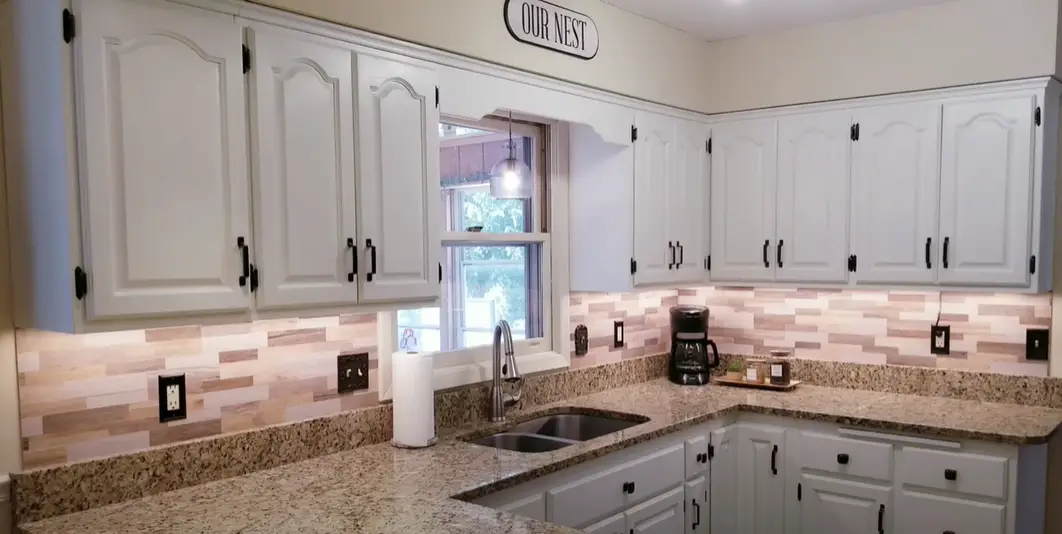
Build a Butcher Block Island
If you want to completely change the look of your kitchen, consider building a butcher block island. This can be done with minimal carpentry skills and basic woodworking tools. You’ll need to purchase a few pieces of wood and map out the design before assembly. Once it’s built, you can use it as extra counter space or as a place for meal preparation.
Build a Sideboard
A sideboard is a great way to add more storage and display space to your kitchen. You can build one by using off-the-shelf materials like plywood, wooden boards, and decorative hardware. Measure the space you have available before starting and make sure the pieces will fit together properly. Once assembled, you can paint or stain it to match the rest of your kitchen cabinets.
Add a Plate Rack
If you want to show off your favorite dishes, consider adding a plate rack to your kitchen. This is an easy DIY project that can be completed in just a few hours. All you need are some boards and decorative brackets, which can be found at most home improvement stores. Simply measure the space and cut the pieces accordingly before assembling the plate rack.
Add Cabinet Crown Molding
Adding crown molding to your kitchen cabinets can give them an elegant, finished look. The installation process is relatively simple and doesn’t require any special tools. Measure the space you have available before purchasing the wood pieces and make sure everything fits together properly. Once installed, you can paint or stain it to match the rest of your cabinetry.
Add Storage With More Kitchen Cabinets
What do you need to restore kitchen cabinets?
There are a few key items you’ll need to restore kitchen cabinets, including paint or stain, sandpaper, brush and roller, primer, sealer, and varnish. Primer helps create a solid foundation for the paint to stick to, ensuring that it will last. Sandpaper is necessary to scuff up the surface of the cabinets, ensuring that they are ready to be painted or stained. A brush and roller will help you evenly coat your cabinets with paint or stain. Finally, sealer and varnish help protect the paint or stain you’ve applied and add an extra layer of protection against wear and tear.
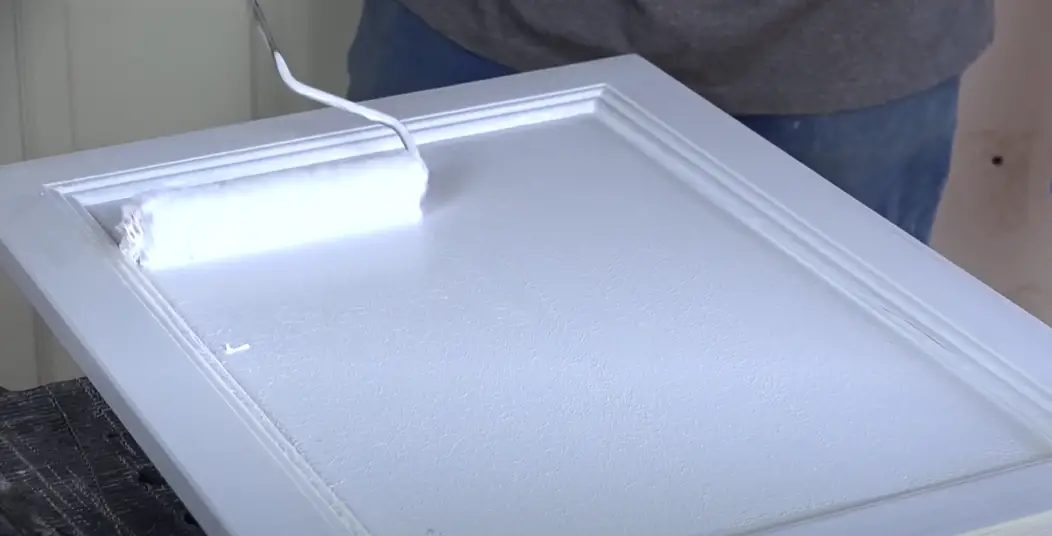
Additionally, if the wood is severely damaged, you may need to use an orbital sander for heavy-duty jobs. Moreover, if you plan to do any refinishing, you’ll need wood putty or filler to fill in any cracks or chips.
Before beginning your project, it’s important to properly prepare your cabinets. This includes cleaning and degreasing the surface of the cabinet with a strong cleaner such as TSP (Trisodium phosphate). Additionally, use sandpaper to remove any scratches and rough up the surface of your cabinet doors so that paint will adhere better.
How to refinish kitchen cabinets?
Refinishing kitchen cabinets can be a great way to bring new life to your kitchen without spending a fortune on replacing them entirely. The process involves removing the old finish, sanding and/or stripping off any existing paint, and applying a fresh coat of paint or stain. To ensure you get the best results possible, there are a few tips and tricks to keep in mind when refinishing kitchen cabinets.
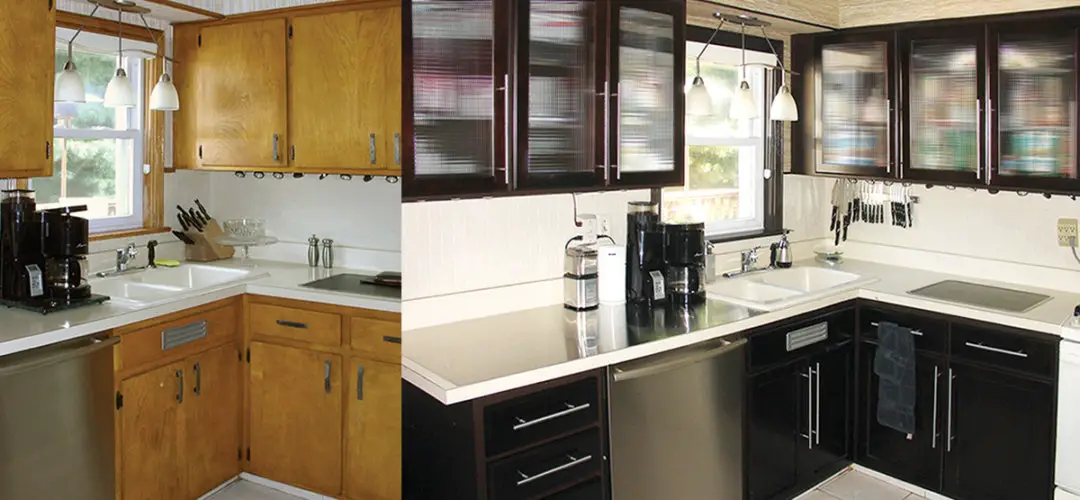
First and foremost, before beginning any cabinet restoration project make sure that all hardware has been removed from the doors and drawers. This will help to avoid further damage during the refinishing process. It is also important to thoroughly clean out the interior of each cabinet so that no dirt or debris will remain after staining or painting.
Once the cabinets have been sufficiently sanded, use either a paint or stain of your choice. Make sure that you use the proper brush for whatever material you choose – natural bristle brushes are great for staining while synthetic bristles are best for painting.
When applying either paint or stain, start on one side of the cabinet door and work your way across evenly until complete. Use long strokes and don’t be afraid to give the doors a few coats for extra protection. Allow each coat to dry completely before applying the next one.
Once all of the cabinet surfaces have been painted or stained, it’s time to reattach any hardware and reinstall the cabinets in your kitchen. With these tips in mind, you can easily restore your kitchen cabinets and bring new life to your cooking space [3].
How can I refinish cabinets without sanding?
One of the most common questions when it comes to cabinet restoration is: “Can I refinish cabinets without sanding?” The answer is yes – but bear in mind that this isn’t a simple task. When refinishing cabinets without sanding, you’ll need to begin with a thorough cleaning first and make sure that all dirt, grease, and grime are removed from the surface. Once completed, you can apply a deglosser to help remove any remaining old finish before applying new paint or stain.
Standard oil-based enamel paint is one of the best options for finishing kitchen cabinets as it provides durable coverage and its glossy finish helps protect against water and wear and tear. After the primer is dry, you will use a brush or roller to apply two coats of paint, allowing ample drying time between each coat. For added protection, it is recommended to apply a sealer after the final coat for extra durability. If you’re looking for more than just a facelift on your cabinets, consider refacing them instead of refinishing them.
What is the difference between refinishing and refacing?
On the other hand, refacing is typically more cost-effective than refinishing. It involves covering up your existing cabinet doors and drawer fronts with either wood veneer or plastic laminate for a fresh look without having to completely start over. In some cases, you might also want to replace hinges and handles as well.
How to decorate the kitchen cabinets?
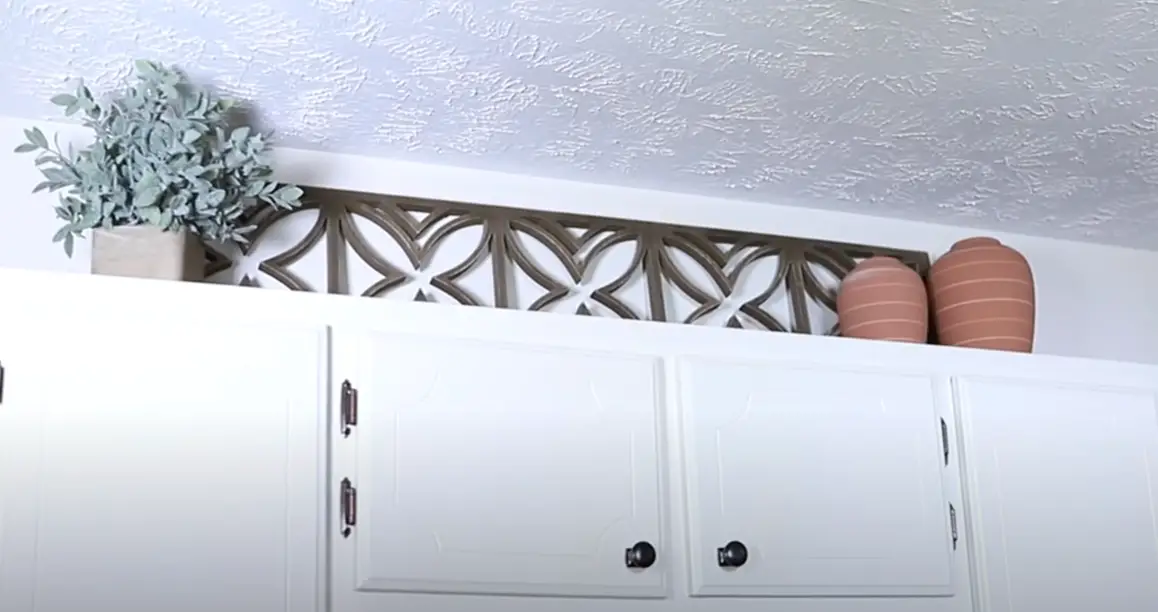
The kitchen cabinets are the main focus point of your kitchen and can leave a lasting impression on visitors. Therefore, it is important to keep them looking their best. One of the best ways to do this is through cabinet restoration. Another way to decorate your cabinets is to add a fresh coat of paint or varnish, change the hardware and accessories, or simply switch out the cabinet doors for something more modern. Moreover, you can add molding and trim for a more decorative look.
Additionally, you can use decorative paper to give a unique touch to your cabinets. Peel-and-stick wallpaper is an easy and budget-friendly way to instantly update the look of your kitchen cabinets. If you are looking for something more permanent, contact paper can be used as well.
Detailed Comparison of Methods for Restoring Kitchen Cabinets
This detailed table provides a comprehensive comparison of different methods used for restoring kitchen cabinets. Restoring kitchen cabinets can transform the appearance of your kitchen and is a cost-effective alternative to replacing them entirely. The table presents key factors to consider when choosing a restoration method, including surface preparation, time required, cost, level of difficulty, and the final outcome. Please note that the data presented below is for reference purposes and individual results may vary.
| Method | Surface Preparation | Time Required | Cost | Level of Difficulty | Final Outcome |
|---|---|---|---|---|---|
| Sanding and Refinishing | Sand the surface to remove old finish and prepare it for refinishing. Clean the cabinets thoroughly. | 4-6 hours | $50-$100 | Easy | Restores the natural beauty of the wood and provides a smooth, durable finish. |
| Chemical Stripping | Apply a chemical stripper to dissolve the old finish. Remove the softened finish with a scraper or sandpaper. Clean the cabinets after stripping. | 8-10 hours | $100-$150 | Moderate | Efficiently removes multiple layers of paint or varnish, allowing for a fresh start in refinishing. |
| Cabinet Refacing | Replace cabinet doors, drawer fronts, and hardware. Apply veneer or laminate to the cabinet frames. Clean the surfaces before refacing. | 12-16 hours | $200-$400 | Intermediate | Provides a completely new look to the cabinets without the need for extensive sanding or stripping. |
| Professional Refinishing | Professionals strip the old finish, repair any damaged areas, and apply a new finish. They may also change the color or stain of the cabinets. | Varies | $500-$1000+ | Advanced | Offers a high-quality, customized finish with attention to detail and professional expertise. |
Explanation:
- Method: This column represents different restoration methods for kitchen cabinets.
- Surface Preparation: This column provides a detailed description of the surface preparation steps involved in each method, such as sanding, cleaning, or chemical stripping.
- Time Required: This column indicates the estimated time required to complete the restoration process for each method. The duration mentioned is an approximation and may vary depending on the size and condition of the cabinets.
- Cost: This column presents a rough cost estimate associated with each restoration method. The values mentioned are approximate ranges and can vary based on factors such as materials used and professional labor costs.
- Level of Difficulty: This column ranks the level of difficulty for each restoration method, ranging from easy to advanced. It indicates the level of skill and expertise required to successfully complete the restoration process.
- Final Outcome: This column describes the expected outcome or result of each restoration method, highlighting the benefits and improvements it offers to the appearance and functionality of the kitchen cabinets.
This detailed table provides an in-depth comparison of various restoration methods for kitchen cabinets, enabling homeowners to make an informed decision based on their preferences, budget, and skill level. It outlines the surface preparation steps, estimated time, cost, difficulty level, and the final outcome for each method. Consider these factors while selecting a restoration approach that best suits your needs and desired results.
FAQ
How do you make your kitchen cabinets look new again?
Restoring kitchen cabinets is a great way to refresh the look of your home without breaking the bank. With some care and attention, you can make your cabinets look new again. Here are some tips for restoring kitchen cabinets:
1. Clean & Sand – Start by giving your cabinets a thorough cleaning with an all-purpose cleaner or mild dish detergent. Once cleaned, sand down any rough patches on the cabinet doors, taking care not to damage any finish that may already be present.
2. Paint or Stain – Next up you’ll need to decide how you’d like to finish off the cabinet restoration project; either paint or stain? If painting, use two coats of high-quality water-based paint and allow ample drying time between coats. If staining, choose a stain that matches the current color of your cabinets and applies with a clean cloth.
3. Re-Install Hardware – Lastly, re-install any hardware that was removed during the initial cleaning process, such as hinges or handles, to complete the restoration project. With these easy steps, you can bring new life to your kitchen cabinets in no time!
How can I update my old kitchen cabinets without replacing them?
Replacing kitchen cabinets can be expensive, so if you’re looking for a budget-friendly option that still gives your kitchen an updated look, consider giving them a good cleaning and then repainting or staining them. Additionally, new hardware such as handles and hinges can instantly give the cabinets a more modern feel. Finally, updating any lighting fixtures above the cabinets or adding decorative trim will also help to breathe new life into your existing cabinets without needing to buy replacements. With some creativity and elbow grease, you can have beautiful cabinets in no time at all!
What is the best way to clean kitchen cabinet doors?
Cabinet doors should be cleaned using an all-purpose cleaner or mild dish detergent. If there are any tough stains, use a soft scrub brush and more detergent to scrub away the stain. Once you’ve finished cleaning, it is important to dry the doors completely before moving on to the next step in the restoration process. For extra shine, polish the cabinet doors using a light furniture wax or oil-based polishing product.
What type of paint should I use for kitchen cabinets?
For best results when repainting kitchen cabinets, use two coats of high-quality water-based paint that is specifically designed for painting cabinets. Be sure to allow ample drying time between coats for a lasting finish. Additionally, if you want an even shinier look then apply one coat of clear polyurethane on top of the paint. With this high-quality paint, you’ll have beautiful cabinets that look like new!
What is the most expensive thing in a kitchen remodel?
The most expensive part of a kitchen remodel will depend on the scope of work and the materials chosen. Generally, replacing cabinetry and countertops can be among the costliest items in a kitchen remodel. Additionally, choosing high-end appliances or any custom features such as lighting fixtures or built-in cabinets can also add to the overall cost. Therefore, it is important to plan carefully and weigh all options before beginning any kitchen renovation project. With careful consideration, you can create an amazing kitchen without breaking the bank!
Is Murphy oil soap good for kitchen cabinets?
Murphy Oil Soap is a gentle, all-natural cleaner that is perfect for cleaning kitchen cabinets. For best results, moisten a soft cloth with the oil soap and use it to gently wipe down cabinet surfaces. As a bonus, this product will also help to remove any grease or dirt buildup without leaving behind streaks or residue. However, be sure to avoid getting any of the oil soap on painted areas as it can cause discoloration. With Murphy Oil Soap you’ll have clean and shiny cabinets in no time at all!

How can I restore my kitchen cabinets without painting?
If you’re looking for a way to restore your kitchen cabinets without painting, consider staining them instead. Stains come in many colors and can help to give the cabinets a refreshed look without having to use paint. Additionally, some stains are designed to penetrate the existing finish of the cabinet doors, creating an even more natural look.
What do professionals use to refinish kitchen cabinets?
When refinishing kitchen cabinets, professionals usually utilize a combination of sanding and staining or painting. The process begins by sanding down the existing finish to create a smooth surface. Then they may apply primer, stain, and/or paint as desired. Finally, they will use a high-quality clear topcoat to protect and seal the cabinet doors for lasting beauty. With this professional approach, your cabinets will look like new!
Can I resurface my kitchen cabinets myself?
Yes! With some patience and dedication, you can resurface your kitchen cabinets yourself. Start by removing the doors and drawers, then sand down any existing finish. Next, fill in any holes or cracks with wood putty before priming the surfaces. Once everything is ready to go, choose a paint or stain of your liking and apply it evenly across all cabinet surfaces. Finally, add a clear topcoat for extra protection against wear and tear. With some hard work and dedication, you can have beautiful cabinets in no time!
What is the average cost to refinish cabinets?
The cost to refinish cabinets can vary greatly depending on the scope of work and materials used. On average, it can cost anywhere from 200 to 600 dollars per cabinet door. Furthermore, if you choose to have your cabinets professionally refinished, labor costs should also be taken into consideration. However, no matter the cost, a good cabinet refinishing job will pay off in the long run with beautiful and durable kitchen cabinets that last for years!
How do I prepare my kitchen cabinets for restoration?
To prepare your kitchen cabinets for restoration, start by removing all the contents from the cabinets. Next, take off the cabinet doors, drawers, and hardware. Clean the surfaces thoroughly using a gentle cleaner to remove grease, grime, and dirt. Sand the surfaces lightly to create a smooth and even base for the restoration process. Finally, wipe down the cabinets with a tack cloth to remove any dust or debris before applying any finishes.
What are the steps to refinishing kitchen cabinets?
The steps to refinishing kitchen cabinets typically involve the following:
1. Remove the cabinet doors, drawers, and hardware.
2. Clean the surfaces thoroughly to remove grease and dirt.
3. Sand the surfaces lightly to create a smooth and even base.
4. Apply a primer to help the paint adhere and provide a durable finish.
5. Paint the cabinets using a high-quality paint specifically designed for cabinets.
6. Allow the paint to dry completely between coats, following the manufacturer’s instructions.
7. Reattach the cabinet doors, drawers, and hardware.
8. Consider applying a protective top coat to enhance durability and longevity.
What tools and materials do I need to restore kitchen cabinets?
To restore kitchen cabinets, you will need several tools and materials, including:
– Screwdriver or drill
– Sandpaper (medium and fine grit)
– Tack cloth
– Painter’s tape
– Drop cloths or plastic sheets
– Primer
– Paintbrushes or rollers
– High-quality paint for cabinets
– Optional: Protective top coat, such as polyurethane
– Optional: New hardware (knobs, handles, hinges)
Can I refinish my kitchen cabinets without sanding?
While sanding is typically recommended to create a smooth and even surface for refinishing, there are some alternatives to consider. One option is to use a liquid deglosser or a chemical stripper to remove the existing finish without sanding. These products work by dissolving the old finish, allowing you to apply a new one. However, keep in mind that the results may not be as durable as sanding, and it’s essential to follow the manufacturer’s instructions carefully.
How long does it take to restore kitchen cabinets?
The time it takes to restore kitchen cabinets can vary depending on factors such as the size of the kitchen, the complexity of the cabinets, and the restoration techniques used. Generally, the process can take anywhere from a few days to a couple of weeks. This includes the time needed for preparation, sanding, priming, painting, drying between coats, and reassembling the cabinets. It’s important to allocate enough time and plan accordingly to ensure a successful restoration project.
What are some alternative options to restore kitchen cabinets?
If you’re looking for alternative options to restore kitchen cabinets without painting, you may consider the following:
– Staining: Instead of painting, you can strip the existing finish and apply a new stain to enhance the natural beauty of the wood.
– Refacing: This involves replacing only the cabinet doors and drawer fronts while keeping the existing cabinet boxes. It’s a more expensive option but can give your kitchen a fresh look.
– Professional refinishing: Hiring a professional cabinet refinishing service can save you time and ensure high-quality results. They have the expertise and equipment to handle the restoration process effectively.
How can I maintain and prolong the restored finish of my kitchen cabinets?
To maintain and prolong the restored finish of your kitchen cabinets, follow these tips:
– Clean regularly: Wipe down the cabinets with a soft cloth or sponge and a mild cleaner specifically designed for wood surfaces.
– Avoid harsh chemicals: Steer clear of abrasive cleaners, ammonia-based products, or solvent-based cleaners, as they can damage the finish.
– Use gentle cleaning techniques: Avoid scrubbing vigorously or using abrasive scrub pads that can scratch the surface.
– Handle with care: Be mindful of using cabinet knobs or handles without sharp edges that can scratch the finish when opening or closing the doors.
– Consider adding a protective top coat: Applying a clear protective top coat, such as polyurethane, can add an extra layer of durability and help protect the finish from wear and tear.
Useful Video: How to get years of grease off your wooden cabinet
Conclusion
Restoring kitchen cabinets is a great way to inject new life into your home. With the right materials and tools, you can create a beautiful space that’s sure to be the talk of the town. Whether you’re working with wood or laminate, these tips should help you get started on your cabinet restoration project! Make sure that when using power tools, chemical strippers, and other products, to always wear safety goggles and protective gloves. Also, make sure to follow all instructions on product labels so as not to cause harm while restoring your cabinets.
References
- https://topscabinet.net/when-should-you-replace-your-kitchen-cabinets/
- https://www.thisoldhouse.com/kitchens/21017763/10-ways-to-update-kitchen-cabinets
- https://www.homesandgardens.com/kitchens/how-to-refinish-kitchen-cabinets





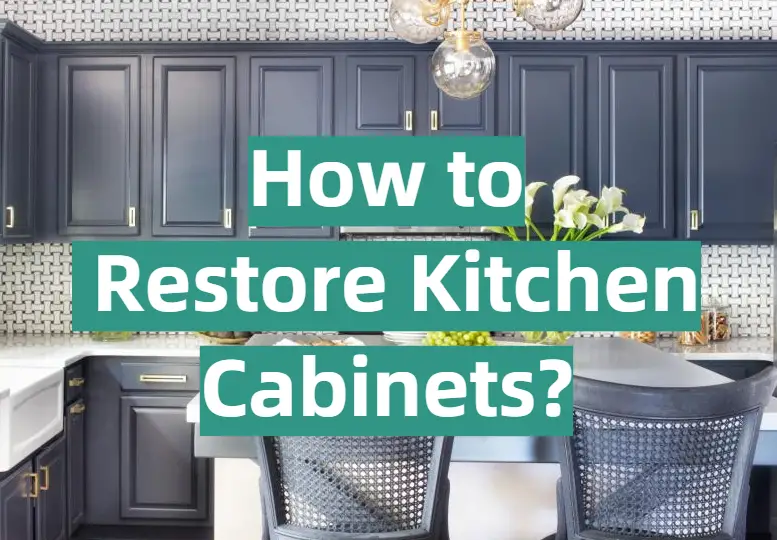





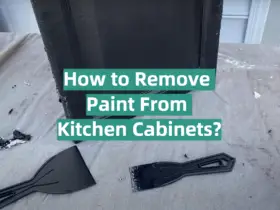
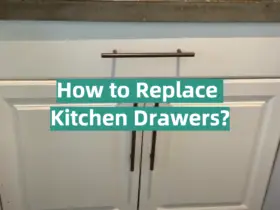

Leave a Reply